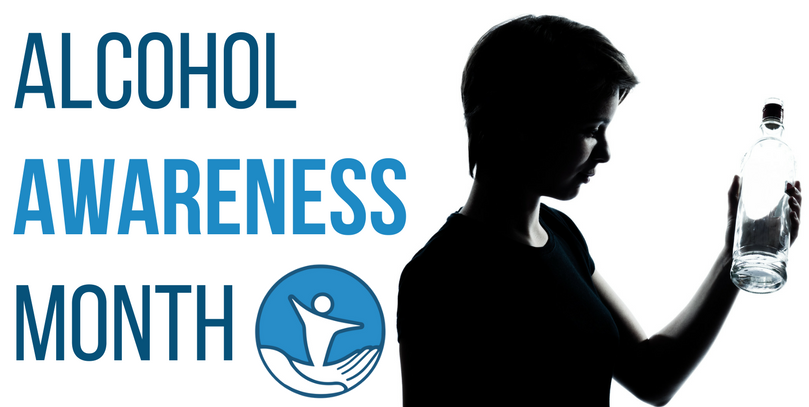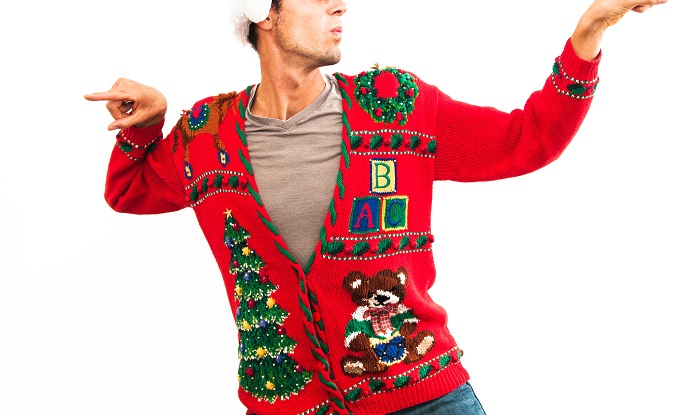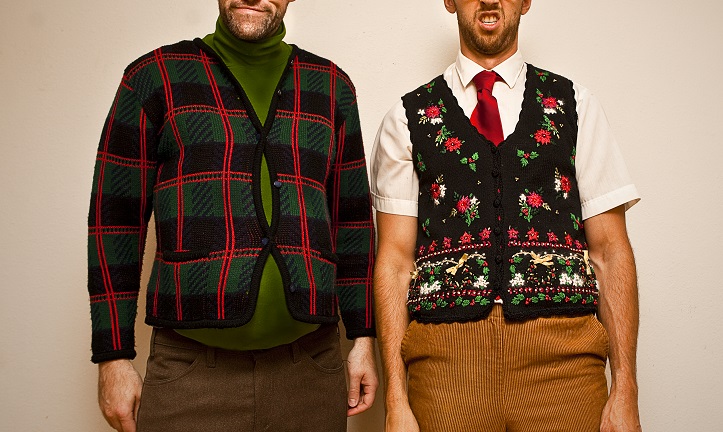by Justin Mckibben | Oct 1, 2018 | Alcohol, Alcohol Addiction, Alcoholics Anonymous, Alcoholism, Binge Drinking, Detox, Dual Diagnosis, Inpatient Treatment

(This content is being used for illustrative purposes only; any person depicted in the content is a model)
“Alcoholic” is the kind of term that a lot of people jokily use to describe their friend who has a few too many drinks one night, or something they say dismissively to make light of their own drinking binges. But does the average person truly understand what it means to be an alcoholic? Alcohol addiction might not seem as serious to some people, but alcoholism is truly devastating and far more complicated than you may think. Partly because people often assume that all alcoholics are the same.
So first, let us look at how alcoholism is commonly defined. Then, let us look at 4 different problem drinkers to see how alcoholics can be quite different.
Understanding Alcoholism
Alcohol use disorder (AUD) has been more commonly known for decades as alcoholism. Alcoholism is frequently used as a more broad term for any drinking of alcohol that results in physical and/or mental health problems. At one point, the Diagnostic and Statistical Manual of Mental Disorders (DSM) divided alcoholism into two types of disorders:
- Alcohol abuse
- Alcohol dependence
The most recent version is DMS-5, which integrates these two disorders into one definition of alcohol use disorder. That DSM-5 also identifies levels of mild, moderate and severe sub-classifications. According to the DSM-5, anyone meeting two of the 11 criteria for AUD in the same 12-month period would receive a diagnosis of AUD.
These 11 criteria include:
- Had times when you ended up drinking more, or longer, than you intended
- More than once unable to stop drinking when you wanted to or tried to stop
- Spent a lot of time drinking, being sick from drinking, or recovering from the aftereffects of drinking
- Wanting a drink so badly you cannot think of anything else
- Drinking or being sick from drinking often interferes with taking care of your home, family, job, school responsibilities
- Continuing to drink even though it causes trouble with family and friends
- Giving up or cutting back on interests and activities in order to drink
- Getting into situations that increase your chances of getting hurt while or after drinking
- Continuing to drink despite feeling depressed or anxious, adding to another health problem, or having memory blackouts
- Needing to drink much more for the same effect
- Experiencing alcohol withdrawal symptoms when the effects of alcohol wear off
Then the severity of the AUD is defined as:
Mild alcoholism is the presence of 2 to 3 of these symptoms.
Presence of 4 to 5 of these symptoms suggests moderate alcoholism.
The presence of 6 or more of these symptoms is an indication of severe alcohol use disorder.
5 Subtypes of Alcoholism
The National Institute on Alcohol Abuse and Alcoholism (NIAAA) is part of the National Institutes of Health (NIH). This organization has actually identified what it believes are 5 subtypes of alcoholism to help expand on our understanding of this complex disease. By looking at how alcoholism can manifest in different forms, a person can learn how to identify warning signs, and how to look for a personalized treatment program that fits their needs.
-
Young Adult
According to the NIAAA, the largest percentage of alcoholics actually falls into this category, with 31.5% of alcoholics in America. Nearly 1/3 of all alcoholics fit into this subtype.
This group is typically late teens and early 20s. Often these young adults are likely college students. The Centers for Disease Control and Prevention (CDC) reports:
- Underage drinkers between the ages of 12 and 20 regularly consume more alcohol at a time than older drinkers
- 90 percent of the alcohol consumed by this group is through binge drinking
Binge drinking is often perpetuated by underage and young adult drinkers. People who fall into the young adult alcoholic subtype rarely have alcoholism in their family history, and they may also be less likely to seek help for their excessive drinking as it is often considered “normal” as a “phase of life” that family members and adults may not take seriously.
-
Young Antisocial
This type of alcoholic is typically someone in their mid-20s who started drinking alcohol at an early age. With anyone, alcohol impacts brain chemistry, and regular exposure can actually change the way the brain’s circuitry works.
Young brains do not have a fully developed prefrontal cortex, meaning young people can have more difficulties controlling emotions and impulses. They are also more likely to take bigger risks. So excessive drinking may interfere with normal brain development, and increase the odds of substance abuse and addiction.
Unlike the young adult subtype, more than half of the young antisocial alcoholics have a family history of alcoholism.
Many people in this category suffer from a mental health disorder. Around half of the young antisocial subtype also struggle with an antisocial personality disorder. If someone is struggling with a co-occurring mental health disorder, the risk of developing alcoholism or a substance use disorder (SUD) is elevated. Other co-occurring disorders frequently found in this category include:
Around 3/4 of this subtype will also use tobacco and/or marijuana. They may also struggle with opioids or cocaine addictions.
-
Functional
Around 19.5% of the alcoholic population in the country will fall into the category of the functional alcoholic. These are typically middle-aged, well-educated, and seemingly well put together individuals. They may have a seemingly stable home life with a loving family. Functional alcoholics probably have a steady job and appear to have their lives together. They do not fit into the common stereotype of alcoholism.
Around 1/4 of this subtype of alcoholics have at least one major depressive episode in their lives. However, functional alcoholics are also often good at hiding emotional distress and issues with drinking.
Usually, a functional alcoholic will consistently fulfill most of their regular obligations. In fact, their family may even enable their drinking by making excuses for them when issues related to alcohol abuse do come up. The fact that they are able to appear successful will make it much harder to convince them that they have a drinking problem. Thus, many functional alcoholics will not seek help.
-
Intermediate familial
This subtype is also typically made up of middle-aged alcoholics. Around half of these individuals come from families with multigenerational alcoholism. Close to 1 out of every 5 intermediate familial alcoholics also struggles with marijuana and cocaine abuse. Many of these individuals also have co-occurring mental health disorders.
- Nearly half of all intermediate familial alcoholics have struggled with clinical depression
- 20% have battled bipolar disorder
- Many others struggle with obsessive-compulsive disorder and generalized anxiety disorder
A lot of intermediate familial alcoholics may use alcohol as a way to self-medicate the difficult emotional symptoms of their mental health disorders.
-
Chronic severe
When people use the term alcoholic, this is the subtype they most commonly associate with it. Surprisingly though, chronic severe alcoholics only make up 9% of the entire alcoholic population of America.
So really, that stereotype of alcoholism actually represents the minority of alcoholic drinkers.
Chronic severe alcoholics are comprised mostly of middle-aged individuals who had early onset of problem drinking. This subtype experiences high rates of Antisocial Personality Disorder and criminality. Furthermore, nearly 80% of the chronic severe alcoholics come from families with multigenerational alcoholism. This group has the highest rates of other psychiatric disorders, including:
- Depression
- Bipolar disorder
- Anxiety disorders
Chronic severe types also experience high rates of dependence with:
- Tobacco
- Marijuana
- Cocaine
- Opioids
This is alcoholism to an extreme. Thankfully, this is the subtype with the highest rates of admission to alcohol addiction treatment.
Why Alcohol Addiction Treatment Matters
According to the NIAAA, in 2015 over 6% of American Adults met the criteria for AUD. Sadly, less than 10% of those people struggling with alcoholism received professional treatment. Those numbers alone show how much having alcohol addiction treatment matters. Each subtype will have unique experiences, which means they can greatly benefit from a recovery plan that is custom made for their unique needs. A functional alcoholic may want a treatment plan that incorporates their family. A chronic severe alcoholic may be suffering from a serious health condition that requires more of a focus on medical care.
The truth is, for how devastating alcoholism can be, it is troubling that so few people actually get the help they desperately need. Alcohol withdrawal symptoms are not just uncomfortable, but they can be dangerous and even life-threatening depending on the severity. That is why safe medical detox for alcohol is such a key component of a treatment program.
With all of those subtypes who experience co-occurring mental health disorders, it is critical that they have access to dual diagnosis treatment opportunities. For these individuals, it is important that treatment is not exclusively focused on alcoholism, but also addresses their mental health. Dual diagnosis treatment is designed to simultaneously treat co-occurring conditions while also providing comprehensive care and support for recovering from alcohol addiction. For those with co-occurring disorders, only treating one while ignoring the other can be counterproductive. An untreated mental health disorder can ultimately lead an individual to self-medicate. Dual diagnosis treatment isn’t just a better level of care- it is a crucial aspect of relapse prevention.
Regardless of what subtype someone may fit into, it is important that anyone who fits the criteria for alcohol use disorder seek professional addiction treatment. If you or someone you love is struggling, please call toll-free now. We want to help.
CALL NOW 1-888-922-5398
by Justin Mckibben | Apr 10, 2018 | Alcohol, Alcohol Addiction, Alcoholics Anonymous, Alcoholism, Binge Drinking, Parenting, Underage Drinking

Did you know that April is Alcohol Awareness Month?
According to the Center for Disease Control and Prevention (CDC), excessive alcohol use led to approximately 88,000 deaths each year between 2006 and 2010. Among working-age adults between 20 and 64 years old, excessive drinking was responsible for 1 in every 10 deaths. Alcohol abuse is a greater risk than many people realize. Sadly, underage drinking in America has also become a very serious problem.
Back in April of 1987, the National Council on Alcoholism and Drug Dependence, Inc. (NCADD) began sponsoring the national observance of Alcohol Awareness Month in order to increase public awareness and understanding of the risks associated with alcoholism. America’s relationship with heavy drinking is already pretty intense, so taking the time for this month to reflect is probably a good idea.
A big goal of this observance is to reduce the stigma attached to alcohol abuse and addiction. Advocates are also encouraging local communities to focus on alcoholism and alcohol-related issues. Alcohol Awareness Month isn’t just for looking at the impacts on society, but also at the risks to the individual, and promoting education.
NCADD states that the theme for Alcohol Awareness Month is- “Changing Attitudes: It is not a rite of passage.”
Changing Attitudes
The risk alcohol poses to young people is not something to take lightly, but sadly many people do. Too many parents are willing to overlook their children drinking underage because they have adopted the idea that drinking in your teens and early twenties is a ‘rite of passage’. This mindset actually minimizes the reality, which is that alcohol use is especially harmful to young people. But many parents just assume their kids will “get through it”. Parents frequently chalk the whole thing up to a “phase” that all young people experience. But is it safe to take it so lightly?
However, drinking is directly associated with many severe problems for young people. This shows that parents face some unique challenges when talking to children and young people about drinking and drug use. However, according to the NCADD, research has shown that kids who have conversations with their parents and learn about the hazards of alcohol and drug use are 50% less likely to use these substances than those who don’t. Parents have a critical position in alcohol abuse prevention. They have the power to help change the attitudes that lead to minimizing destructive behaviors like underage drinking.
Addressing the role parents can play in teaching their kids about the risks of alcohol is what this year’s Alcohol Awareness Month is all about.
Believe it or not, parents can help kids understand that using alcohol isn’t a healthy or effective way to feel or be independent. It might seem “cool” but it isn’t a safe or sustainable strategy for fitting in socially. People may think of drinking like a minor rebellion that provides a short-term solution, but that kind of logic can easily lead to a more serious long-term problem.
Underage Drinking
To put into perspective just how serious underage drinking is, we can take a look at more statistics from the CDC.
- Excessive drinking is responsible for more than 4,300 deaths among underage youth each year.
- 11% of all alcohol consumed in the United States is by people between 12 and 20 years old, even though it is illegal.
- More than 90% of the alcohol consumed by people between 12-20 years old is done by binge-drinking.
There are a lot of terrible consequences that result from underage drinking, including:
- Memory problems
- Abuse of other drugs
- Changing in brain development (which could have a long-term impact)
- Traffic fatalities
- Violence
- Suicide
- Higher risk of homicide
- Educational failure
- Alcohol overdose
- Unwanted, unplanned and unprotected sex
- Physical or sexual assault
- Legal problems
- Hangovers or Illnesses
- Death from alcohol poisoning
According to the CDC, young people who start drinking before age 15 are actually six times more likely to develop alcohol dependence and abuse later in life than people who begin drinking at or after age 21. So how can you get involved in making a difference? There are a lot of ways to acknowledge Alcohol Awareness Month.
Acknowledging Alcohol Awareness Month
April has a lot of local, state, and national events. These are opportunities to help educate people about the treatment and prevention of alcoholism, particularly among our youth. They are also meant to highlight the important role parents can play in helping kids better understand the impacts of alcohol.
Local NCADD Affiliates, as well as schools, colleges, churches, and countless other community organizations, will sponsor and host a number of activities, and you can even find a way to organize your own Alcohol Awareness Month events via the NCADD website. The NCADD even encourages everyone to participate in alcohol-free days.
An easy way to join the conversation is to follow #AlcoholAwarenessMonth
These events are also meant to encourage individuals and families to find help concerning alcohol-related issues. Sometimes this kind of awareness comes down to acknowledging the problem in your own life. Whether it is your own drinking, or that of a loved one, seeking help and support can change everything. Alcohol Awareness Month provides opportunities for prevention and promotes treatment for those who need it.
Alcohol abuse and alcoholism should not be taken lightly. In fact, alcohol withdrawal can be extremely dangerous. For those addicted to alcohol, it is not recommended to try and get off of alcohol without medical supervision. Safe medical detox is the most effective and supportive environment for those with an alcohol dependence. There are a lot of resources available to those who need the help. Alcohol Awareness Month is the perfect time to have that conversation with someone you care about.
Alcohol Awareness Month not only helps us understand the dangers of alcohol, but it reminds us that we are not alone. It helps us to see not only is alcohol dangerous but also that there is hope for those who have already suffered because of alcohol. If you or someone you love is struggling, please call toll-free now. We want to help.
CALL NOW 1-888-922-5398
by Justin Mckibben | Dec 24, 2017 | Alcoholics Anonymous, Christmas, Coping Skills, Family, Holiday, Recovery, Self Improvement, Sober Fun, Sobriety

(This content is being used for illustrative purposes only; any person depicted in the content is a model)
Ladies and gentlemen, we have made it to the 12th Step of Christmas!
Those total lords have been jumping all around, the maids have stopped milking and are dancing with the other ladies. All the beautiful birds are flying around like crazy… but we have been waiting for the bass drop… BOOM! In comes the 12 drummers, and I mean they come in like the Ohio State Marching Band, just killin it!
Still don’t know why your true love brought so many birds, but hey it’s a party.
So to follow the classice sense of the song, we are going to rehash the other 12 Steps of Christmas for our final thought.
1. Admitting that I am powerless over the Holidays and they can make my life unmanageable.
2. Came to believe a Power Greater than myself could restore my holiday cheer
3. Made a decision to turn your Holiday over to the care of your Higher Power.
4. Made a Searching and Fearless Christmas List.
5. Admit to ourselves and another human when we are being a Grinch.
6. Become entirely ready to let go of the Ba Humbug.
7. Humbly asked our Higher Power to remove our shortcomings of holiday spirit.
8. Made a naughty list and checked myself twice; became willing to make amends and be nice.
9. Made amends when it wouldn’t ruin someone else’s Christmas.
10. Continued trying to stay off the naughty list, and when we are naughty we promptly get jolly.
11. Seek more of the Christmas spirit with through prayer or meditation.
And finally….
Step 12: Carry the Christmas Spirit to others in all our affairs
This is what it is all about, really. This is why Christmas is such a beloved and cherished holiday for so many around the world. Without trying to take anything away from the vital role that religious faith plays in it for many, the spirit of Christmas is about sharing peace and love, goodwill toward others, compassion and connection.
We have talked about all of this through every step of the 12 Steps of Christmas. That is because love, peace, compassion, connection are all in the spirit of Christmas AND in the spirit of the 12 Steps of recovery. It isn’t hard to draw this relationship because at the core they give us inspiration and hope to build a better life, with fulfilled relationships and meaningful purpose.
In the 12th Step of most recovery fellowships they put a lot of emphasis on carrying the message of recovery. In Step 12 of Christmas let us say we can use the same idea; spread that love and connection to everyone. Of course there is the literal giving of gifts during Christmas when we try to bring joy to others with materials, but in the end these are just an offering or a gesture by which we communicate that love and connection to them.
It is just one way we give of ourselves to spread the love.
Practice the Christmas spirit in all things…
The truth is too often we forget that these attitudes and practices are not just meant to be done on the holidays. Too many people forget about acceptance, willingness and openness when the sleigh bells have come and gone. Many will make strong resolutions for the New Year, but few will remember to carry these principles on with them. Those who work the 12 Steps in recovery are actually very fortunate to have a program that provides a consistent practice of compassion and growth.
The 12 Steps remind us of the importance of self-awareness, reflection, humility and selfless action. They give us an outline for personal development while helping us try to mend damage done in active addiction.
So even if you are not in recovery from drugs or alcohol, you can learn a lot about yourself and about your impact on the people who matter most to you. Doing things like taking inventory, addressing your character defects and helping others is really just a path toward spreading the cheer, joy, love and connection that Christmas gives us.
This year, try to carry the spirit of Christmas in all things. Try to remind yourself to make every day count; to move away from the attitudes that hold you back and toward the wish list of a sober and fulfilled life.
Keep the Christmas party alive every day. Hey, you can even keep partrige. He’s not such a bad bird anyway.
Merry Christmas. Happy Holidays.
Remember, this time of year the best gift you can ever give is yourself. For those who suffering from addiction, that means the opportunity for a life of recovery. If you or a loved one is struggling with substance abuse or addiction, please call toll-free now.
CALL NOW 1-888-922-5398
by Justin Mckibben | Dec 24, 2017 | Alcoholics Anonymous, Christmas, Coping Skills, Family, Holiday, Parenting, Recovery, Sober Fun, Sobriety

(This content is being used for illustrative purposes only; any person depicted in the content is a model)
The lords leaping and the ladies dancing have got the party going. The farm animals are all running a muck and suddenly this super-band of 11 dudes with pipe-instruments come in and break out in a jam session.
I take back what I said earlier about your true love… this is getting turnt.
With one more day to go in the 12 Steps of Christmas in Recovery, we are grateful for Step 11 giving us a chance to get grounded again. Ask the band to play some mellow jazz for a minute.
Step 11: Seek more of the Christmas spirit with through prayer or meditation
In earlier steps we talked about the importance of self-awareness and honest reflection, so with the prayer and meditation of Step 11 we seek to further connect with our Higher Power, whatever that means to you, in order to align with the spirit of Christmas.
For some of those who are still not so sold on the whole idea of spirituality, prayer might still be a little outside of your comfort zone. Remember, that is fine. For those who embrace the practice of prayer, you can take some time out for yourself on Christmas to seek a deeper spiritual connection to the experience.
For those who would prefer to meditate, take time for yourself to reflect quietly on what Christmas means to you. You don’t have to go sit cross-legged in a room with candles to do this. See if you can manage a few moments here or there to truly take a step back and witness all that you have received this Christmas.
I don’t mean just stare at your presents. Actually think on the impact your sobriety has had on the holiday. Look back at every step you have taken up to this point and seek to understand with how it has made a difference to you and the people who love you. Seek a stronger connection to this moment and this holiday through a deeper understanding of it.
The meaning behind being merry…
Meditation and prayer can show us even more of what the true meaning of being merry is. When we pray or meditate honestly and openly, we make room for more of that meaning to be revealed. The truth behind our joy and our merriment is so much more than you can put under the tree. A wise person once said that nothing has any meaning except the meaning we give it. If that is true, what meaning are you giving to Christmas? How are you aligning with the spirit of the celebration?
Ask how far you have come by doing the work on yourself to be more close with others. Ask yourself what is possible if you continue to be the person you set out to be when you got clean and sober, and how it makes these memories so much more. Somewhere in there, we can seek gratitude for what gifts we’ve been given. Not just the toys and gadgets, or the clothes and cards, but the gift of being alive and sober and with people who you care about. To have people who care about you to spend the holiday with.
Christmas in recovery is an amazing thing, and for some of us the meaning behind being merry is true fulfillment through tremendous gratitude. For our lives, for our hopes, and for each other.
Prayer and meditation are just some of the ways we can work on appreciating Christmas. Sometimes, we have to keep praying for those who are still struggling this holiday season. If you or a loved one is struggling with substance abuse or addiction, please call toll-free now. The greatest gift you can give is letting someone know you care, and want to help.
CALL NOW 1-888-922-5398
by staff | Dec 23, 2017 | Alcoholics Anonymous, Christmas, Coping Skills, Family, Holiday, Recovery, Sober Fun, Sobriety

(This content is being used for illustrative purposes only; any person depicted in the content is a model)
So, the party your true love got together is kind of intense. Suddenly there are 10 dudes who claim to be lords are jumping around, and it looks like they might start a mosh pit with the 9 ladies dancing.
Needless to say, Christmas in recovery never sounded so wild.
Anyway, welcome back to the 12 Steps of Christmas in recovery, where we are putting a holiday twist on each of the 12 Steps of recovery used all over the globe.
Are you ready to talk about the next step?
Step 10: Continued checking myself to stay off the naughty list, and when we are naughty we promptly get jolly
After making our naughty list in Step 8 we have a pretty good idea what mischief we made to get on that list. We took a look at how we had wronged people over the year and how it has effected our holiday so far, and in Step 9 we began looking for ways to make this Christmas better by doing more for those we have harmed.
But we still have to make sure we don’t stay in our naughty ways. Step 6 and Step 7 we looked at how our moments of Grinch-ness and Ba Humbug have to be recognized. Now we continue to keep tabs on that naughty list. If you are anything like me, checking it twice and calling it a day just won’t cut it.
So throughout the holiday we need to watch out for those moments when the Grinch in us gets through. It just happens. Nobody is perfect.
What is important is that when we are enjoying the season that we are willing to accept our mistakes and make a conscious effort to interrupt that pattern with a healthy helping of jolly.
Being jolly ain’t always easy…
Of course it isn’t always easy to be jolly. Christmas is full of frustrating moments, even with the people we love. In fact, in some moments it is much easier to revert back to our old ways. Getting overwhelmed or feeling like you aren’t meeting your own expectations is not a sign that you are failing. It just means you have to keep at it.
Even Santa isn’t jolly all the time. Come on, the guy takes most of the year off after one of the most stressful night-shifts imaginable. But those toys don’t all get made in a day.
Christmas can take work, just like recovery. Being happy isn’t just something that happens to you by accident whenever its convenient. Being jolly during the holidays can be like that. So when you slip up and get a little Grinch thing going on, check yourself and promptly turn your attitude toward that which you have already received; a new chance at a better year with your family and friends.
Don’t let yourself stay Scroogey. Check it and get back in the spirit.
Spending Christmas facing the impacts of addiction on others can be extremely difficult, but take this opportunity to be more aware of what truly matters and what that means for your recovery. For those struggling this holiday season, ask for help; not just for your family but, for yourself. Give yourself and those who love you the most the best gift you can. If you or a loved one is struggling with substance abuse or addiction, please call toll-free now.
CALL NOW 1-888-922-5398
by staff | Dec 23, 2017 | Alcoholics Anonymous, Christmas, Coping Skills, Family, Holiday, Recovery, Sober Fun, Sobriety

(This content is being used for illustrative purposes only; any person depicted in the content is a model)
With only a few days let, we finally touch on Step 9 of the 12 Steps of Christmas series! This step takes more action, but for such an important time of year it helps us re-establish some very important connections.
By the way, tell your true love they are getting the hang of the gift giving thing. They threw a party and there are at least 9 ladies on the dance floor! Throw on jingle bell rock and get your collective grooves on.
Step 9: Made amends when it wouldn’t ruin someone else’s Christmas
After making our naughty list in Step 8 we realized that we had done plenty throughout the year to cause some grief to some people we cherish, and for the holiday we have a chance to be a better version of ourselves while spending time together.
While this might not be the appropriate venue to try and make all the wrongs we have done throughout our drug or alcohol use, it is a good opportunity to give as much of yourself as you can. As long as we are not in danger of ruining anyone’s Christmas, we can try to offer our amends to family or friends for the wrongs of Christmas past. Although sometimes it is best we not turn the celebration into a trip down bad-memory-lane. We should not make Christmas about us, but we can also try to do right in the holiday spirit.
Maybe your friend still isn’t over that time you caught his tree on fire last year. Don’t tell him to go deck his halls. Seriously, it’s just rude. Sometimes it isn’t as simple as going to someone and trying to make it right, because some people just aren’t ready for that yet.
Again, we don’t want to make the family gathering about everyone forgiving us or not. It might stir up unwanted hostility. Christmas is about sharing love and joy for everyone, so maybe make some indirect amends for your own naughty-by-nature Christmas past in the form of colorfully wrapped goodies.
The gifts we can give…
Material things aren’t really what the recovery community typically focuses on when it comes to making an amends. While financial amends or amends pertaining to property may sometimes be in someone’s experience, Christmas isn’t always the venue for that.
Still, who doesn’t enjoy a good gift? For those of us in recovery who have the opportunity and the resources, we can make an honest effort to do something nice for those we owe an amends. Everyone loves a good Christmas present, so some of us actually go out of our way to be a slightly less qualified Santa. But material things aren’t really what makes the difference. We have so much to give of ourselves.
We cannot say it enough, Christmas is about love and compassion; joy and humility; gratitude and hope. So give as much of that as you can to those you have harmed on your naughty list. Even if you go over the top with presents, the best gift is always the gift of your love and compassion.
So go through your naughty list and look for the opportunity to give to those you have wronged. When appropriate, you may even take this opportunity to make amends for your naughty ways. Just try your best to show that true gratitude and generosity in your actions and in your presence.
Spending Christmas facing the impacts of addiction on others can be extremely difficult, but take this opportunity to be more aware of what truly matters and what that means for your recovery. For those struggling this holiday season, ask for help; not just for your family but, for yourself. Give yourself and those who love you the most the best gift you can. If you or a loved one is struggling with substance abuse or addiction, please call toll-free now.
CALL NOW 1-888-922-5398







